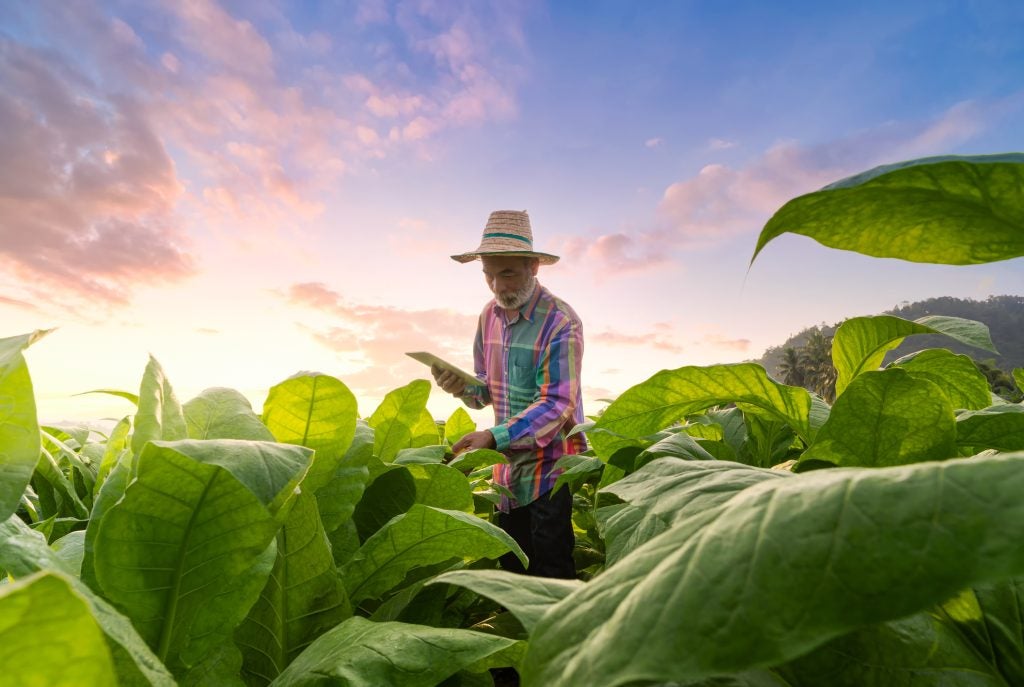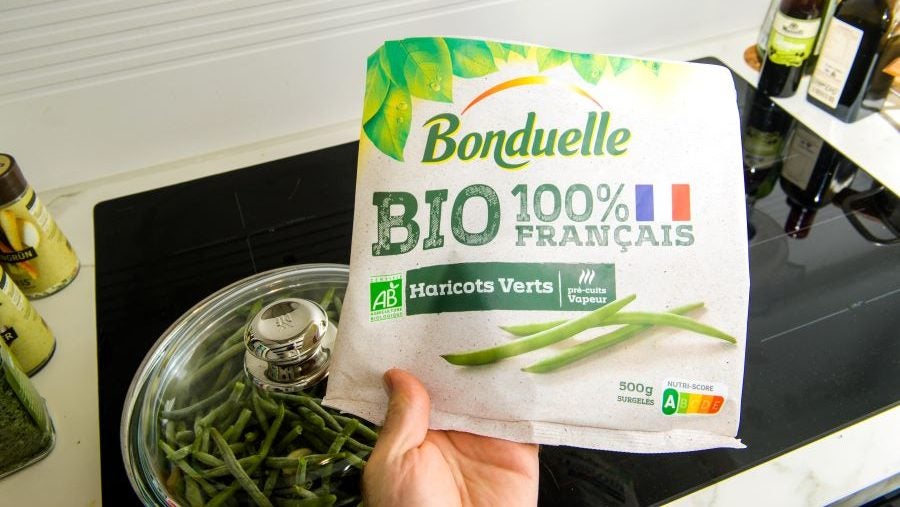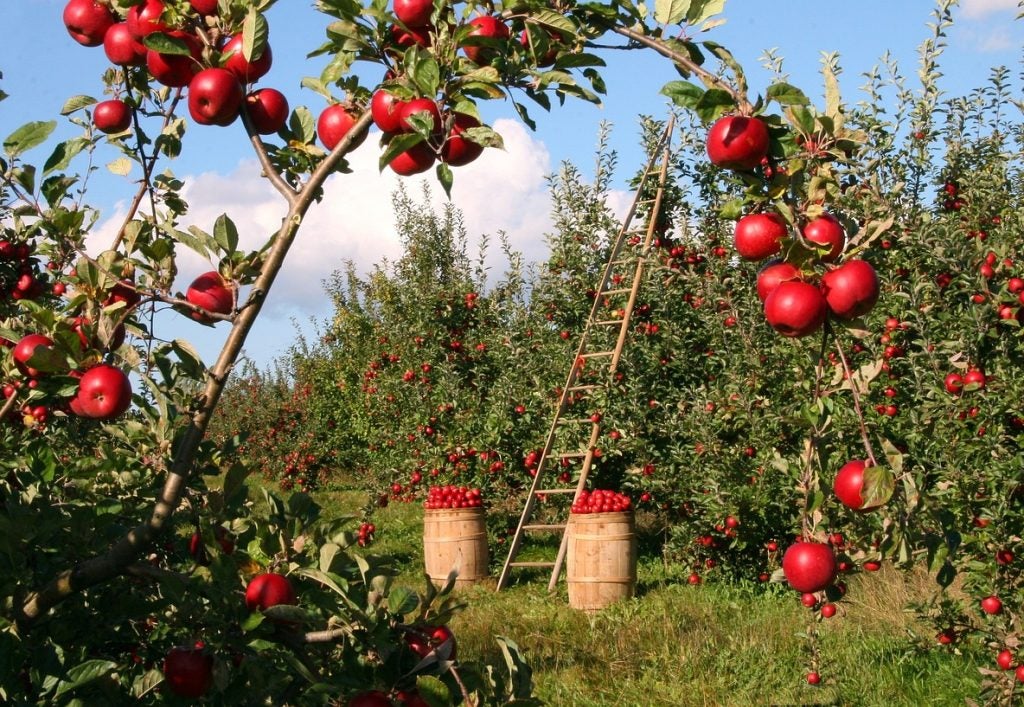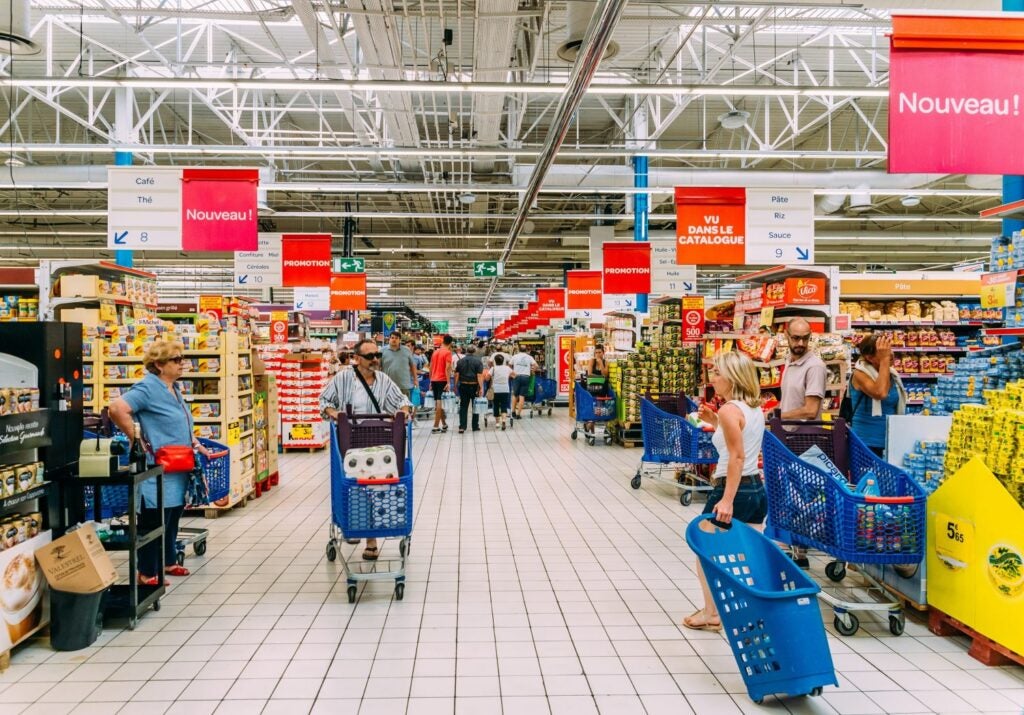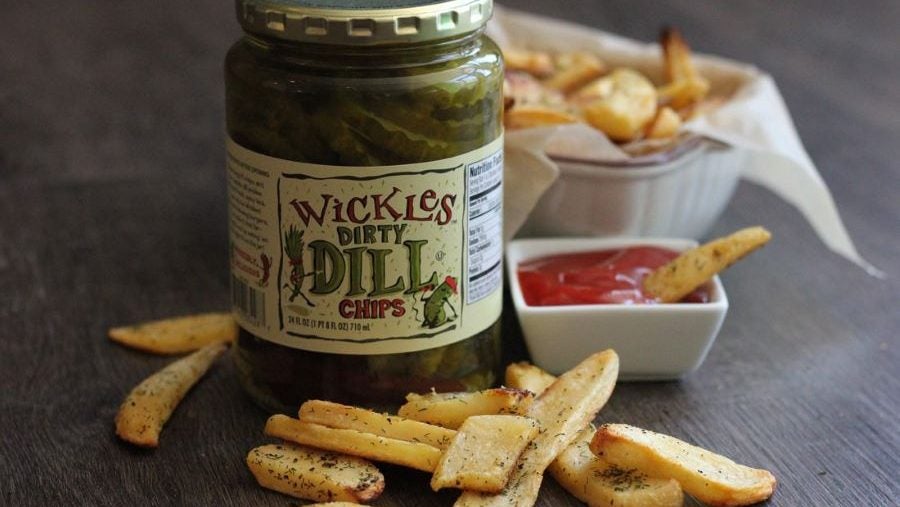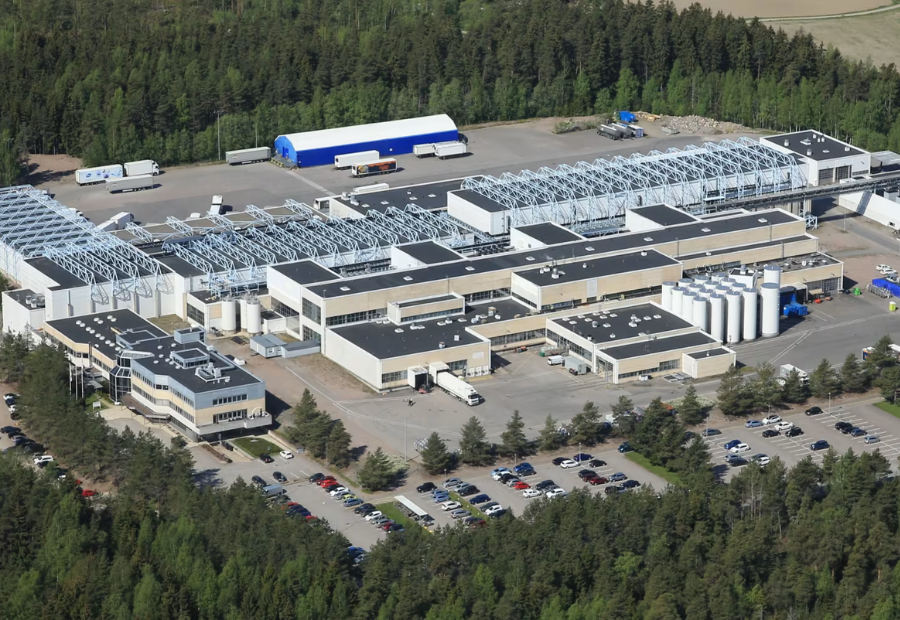The annual UN climate summit, COP28, opened with a bang in Dubai last month as 134 parties – covering three-quarters of global food systems emissions – committed to the Emirates Declaration on Sustainable Agriculture, Resilient Food Systems and Climate Action. The agreement – signed by a further 20 parties since – commits countries to start including food and agriculture in their nationally determined contributions (NDCs), or climate commitments under the Paris Agreement, by COP30 in 2025.
Although technocratic, this was an important landmark considering the world’s food systems contribute around a third of global GHG emissions. Of the 21.4 gigatonnes of carbon dioxide equivalent (GtCO2e) emitted globally by the sector in 2020, around 70% came from agriculture and land-use activities and the remaining 30% from downstream and upstream services such as retail, transport, consumption, fuel production, waste management, industrial processes and packaging.
Four value chains – beef, milk, rice and maize – are responsible for 65% of food and agriculture-related emissions. This goes up to 80% when wheat, pork and poultry are included. Remarkably, livestock production (for meat and milk) constitutes 60% of food systems emissions alone.
With the global population growing fast and 700 million people still living with severe food insecurity, food production is expected to rise by 15% in the coming decades. As a result, food-related emissions are forecast to grow 80% between 2010 and 2050.
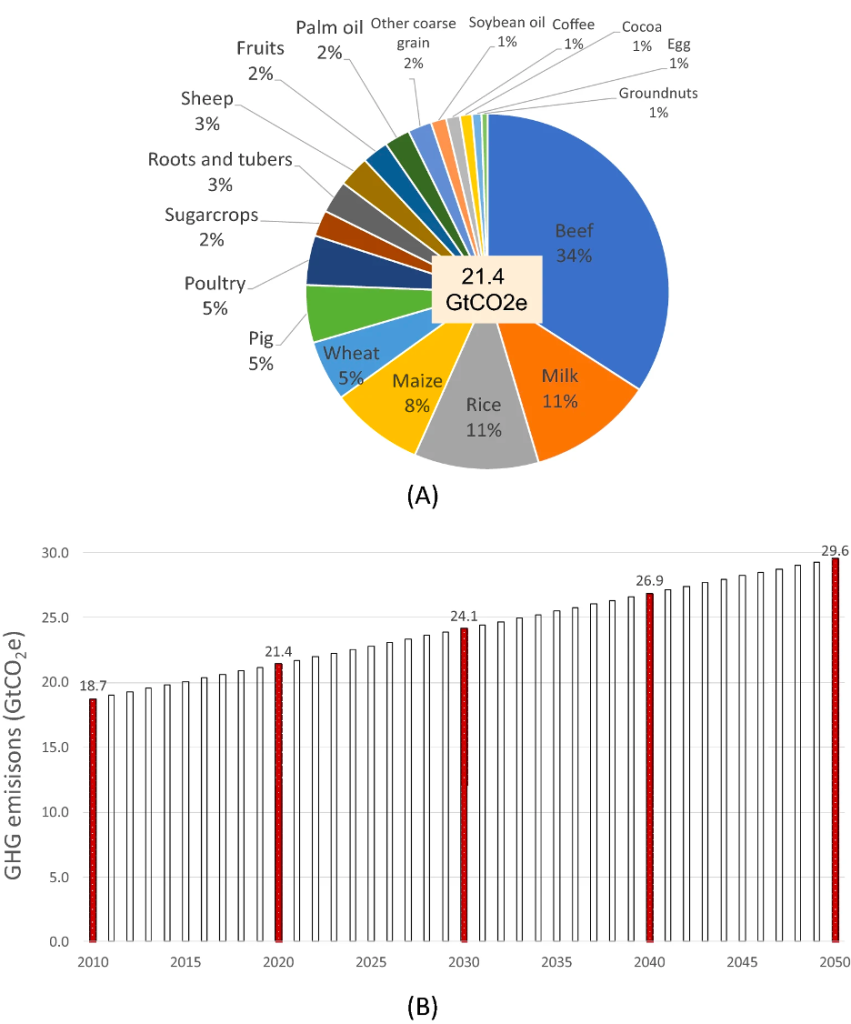
All this is to say that the world’s goal of reaching net-zero GHG emissions by 2050 – and keeping global warming at a manageable level – will simply not happen without a transformation of the food and agricultural system. That transformation will require both supply side changes in agricultural production and demand-side levers such as reduced food waste and dietary changes.
“The system is broken,” said Susan Chomba, director of vital landscapes for Africa at the World Resources Institute, in a recent webinar by the Center for Earth Ethics (CEE). “We have a model that is not working and we need to rethink that model.” As with all system transformation, the million-dollar question is, how?
Efficiency and carbon sequestration
The good news is that it is an eminently feasible task. Before even factoring in the impact of food waste reduction and dietary changes, vast GHG emissions reductions in agriculture are possible through interventions to improve efficiency and carbon sequestration. These interventions could result in 40–70% less GHG-intensive production systems compared with today’s average levels: cutting beef emissions from 7.3 to 2.5GtCO2e per year (/y) and rice and milk from 2.4 to 1GtCO2e/y.
The lion’s share of this mitigation (9.1–13.2GtCO2e/y) would come from less damaging land-use change (such as reducing deforestation for agricultural land expansion); improvements in animal feeding, breeding and manure management; better nutrient management (with a focus on optimising nitrogen fertiliser use); better water management in rice paddies; improvements in energy use across the value chain (energy efficiency and switching to renewables, for instance, in agricultural machinery or food transport); and reductions in food loss and waste (such as by using improved packaging and storage).
“The room for increasing efficiency in food systems is huge, especially in developing countries,” says Ciniro Costa Jr, a scientist at global food research partnership the Consultative Group on International Agricultural Research (CGIAR). “So for livestock that means improved forages, well-managed pastures – using rotational grazing especially – and providing animal feed supplements [such as methane-reducing feed additives]. For cropping systems, the core intervention is nutrient management using precision agriculture – applying the right doses in the right moment. And most farmers do not do soil testing, but it is essential to figure out the best use of farming inputs.”
Costa Jr points out that the US produces a fifth more beef than Brazil annually with just half the herd size. “The US just has a much more intensified pasture system, [using practices such as fertilisation and improved pasture species],” he says.
On top of these efficiency savings, another 10Gt of annual emissions could be cut through carbon sequestration. This could be done by: expanding agroforestry systems (another 5.6GtCO2e/y); improvements in pasture and crop management, such as reduced and no-tillage policies and grass-legume mixtures in pastures (2.5GtCO2e/y); and applying biochar to soils (2.4GtCO2e/y).
Dietary change and technological innovation
Nonetheless, these emissions savings alone will not be sufficient to achieve a net-zero food system, as they will be undercut by the projected growth in food – particularly livestock – production. Meat production is forecast to grow by 37% by 2050 and milk by 29%. Dietary changes will be required as a result, with a reduction in consumption of livestock products in favour of plant-based replacements. If combined with low-emissions practices, these dietary changes could slash food systems emissions by a further 10-25% by 2050.
There are also new technologies in development that could make a difference in the medium to long-term, such as: feed additives for livestock (including methane inhibitors); artificial meat; novel plants and perennials (for carbon sequestration); soil additives; vertical farming; nanoproducts (such as nano-drones); intelligent food packaging; and 3-D printing. Together, these kinds of innovations have the potential to unlock emissions reductions and carbon sequestration of around 8.5GtCO2e/y, representing close to 40% of the sector’s current emissions and 50% of agricultural-related mitigation potential.
It would be feasible to achieve a net-zero food system through increased efficiency and carbon sequestration alone: emissions could be cut from 21.4 to -2.0GtCO2e/y by 2050 (a 110% reduction compared with 2020) by improving all food systems to the tenth percentile of least emissions-intensive practices and harnessing 100% of the carbon sequestration potential. However, realistically, a combination of efficiency gains, carbon sequestration, dietary changes and new agricultural technologies will all be necessary to realise the goal, according to Costa Jr. “There are no silver bullets,” he says.

Systemic challenges for net-zero food
Several key challenges still need to be overcome if the food system is to reach net zero by 2050. First, there are still question marks hanging over the permanence of certain carbon sequestration techniques. Some approaches are hard to monitor and run the risk of re-emitting the carbon back into the atmosphere over the long term.
Second, only around 50% of the mitigation potential of the aforementioned agricultural practices and technologies is currently affordable (defined as up to $100/tCO2e), and around 75% of the mitigation potential is in developing (65%) and least-developed (10%) countries. This will make these changes a hard sell for farmers and governments with limited budgets.
“Farmers will need to invest money and time to implement these new practices,” says Costa Jr. “That brings with it an element of risk – and some farmers don't want to take that risk.”
So, third, climate finance for agriculture will need to be vastly scaled up, with both public and private sector funding. Costa Jr points out that although food systems constitute 30% of GHG emissions, the sector attracts just 5% of global climate finance today. “If we are able to increase climate finance, we may be able to de-risk the investments farmers need to make in order to shift toward low-emitting production.”
He suggests the creation of financial mechanisms to support the adoption of net zero-aligned practices in farming, including traditional bank loans reoriented for positive climate impact, blended finance and carbon markets.
Finally, investing in education, particularly with respect to gender, could improve agricultural governance and raising public awareness of the need for changes to both food production and consumption will be key, according to the CGIAR.
“Good policy matters, whether financing is available matters, all of these things are very important,” Walter Link, founding CEO of Luxembourg-based consultancy NOW Partners, said in the CEE webinar. “We tend to look at things separately, but it is a whole system.”
A road map to a net-zero food system
In a groundbreaking paper published in Nature last year, Costa Jr and his colleagues laid out – for the first time anywhere – a proposed road map for achieving net-zero emissions in global food systems by 2050.
The researchers found a realistic vision of a net-zero food transition would involve the following: the large-scale adoption of low-emission practices to shift global production to the top 30th percentile of least emissions-intensive systems, which could save 10.6GtCO2e/y, or around 50% of the mitigation needed by 2050 compared with the 2020 base year. It would also require realising 50% of the carbon sequestration potential associated with low-emission practices, contributing another 24% (5.2GtCO2e/y). The remaining emissions (5.6GtCO2e/y) would be cut by decreasing 2050 projected livestock production, especially in high and middle-income countries, by 25% (1.2GtCO2e/y) and by deploying new technologies (4.4GtCO2e/y).
To achieve all this, the researchers stated that up to 2030 there needs to be a focus on implementing cost-effective practices that reduce the emissions related to land-use changes from food production. This needs to go alongside the use of existing technologies to improve the production of beef, milk and rice, as well as nutrient management for grain production.
For carbon sequestration, the researchers estimated that low-cost approaches could capture 1.7GtCO2/yr by 2030, 3.5GtCO2/yr by 2040 and 5.2GtCO2/yr by 2050. This would involve adopting agroforestry, applying biochar to soils, improving crop management using tillage and cover crops, and enhancing pasture management through rotational grazing and fertilisation.
In the 2030s, the focus should be on expanding the use of renewables, improving energy efficiency, growing the electric transportation fleet, increasing circular economy and peri-urban agriculture, and promoting dietary changes in middle and high-income countries.
Finally, in the 2040s, the focus needs to shift to affordable new technologies, particularly focusing on livestock production – including methane capture, feed additives and new breeds – novel plants and perennials for carbon sequestration, and improved energy efficiency for storing, processing, transporting, packaging and retailing.

However, these transitions will not be globally uniform, and they will have to be adapted depending on the national context, according to Costa Jr. “Food systems in developed countries are already working at high efficiency, so they will need to focus on new-horizon technologies earlier on; but in developing countries, they will need to focus on the basic efficiency gains first.”
Dr Lucy Wallace, chief of staff at the European Institute of Innovation & Technology, stated in the CEE webinar: “Regenerative agriculture will look very different depending on where you are in the world, the landscape you are operating in, what you are farming, the markets, the offtake contracts that you have to abide by and the value system context that you are operating in.”
Looking ahead, although achieving the net-zero food transition will be a monumental undertaking, there have been some encouraging signs in recent years. Many key stakeholders are increasingly engaging in climate action, particularly through the UN Forum on Sustainability Standards, the Global Methane Pledge and the Science-Based Targets Initiative. Furthermore, there have been important advances in plant-based proteins and agricultural technologies.
[Link src="https://www.just-food.com/opinion/a-good-cop-for-food-is-bad-news-for-failing-food-companies/" title="A good COP for food is bad news for failing food companies" font-size="20px"]Back in Dubai, there were also some encouraging signs at COP28. More than 200 non-state actors, including research institutions, farmers’ groups and philanthropies, signed the Call to Action for Food-Systems Transformation, promoting the transition away from fossil-fuel use within food systems. There were several important financial pledges including $890m to the CGIAR, $57m from the Bezos Earth Fund for food systems transformation and $47m from Norway towards adaptation for smallholder farmers. Brazil, Norway, Sierra Leone, Cambodia and Rwanda launched the Alliance of Champions for Food Systems Transformation, committing to “reorienting policies, practices and investment priorities to deliver better food systems outcomes for people, nature and climate”.
However, as always with pledges at COPs, the proof will be in the pudding, and these financial commitments still barely scratch the surface of what is required: according to the Food and Land Use Coalition, reducing emissions from farms using nature-based solutions would require an investment of more than $100bn annually from now to 2030 to achieve the mitigation needed for the 1.5°C climate pathway.
“I was especially happy with COP28 because they talked more than expected about livestock, which is the key element for net-zero food systems, but I was frustrated with the lack of progress made on the climate finance side,” says Costa Jr. “That will really delay the implementation of the net-zero food transition.”


